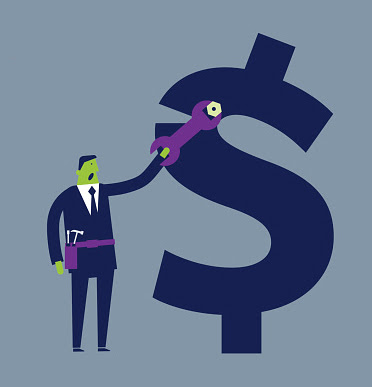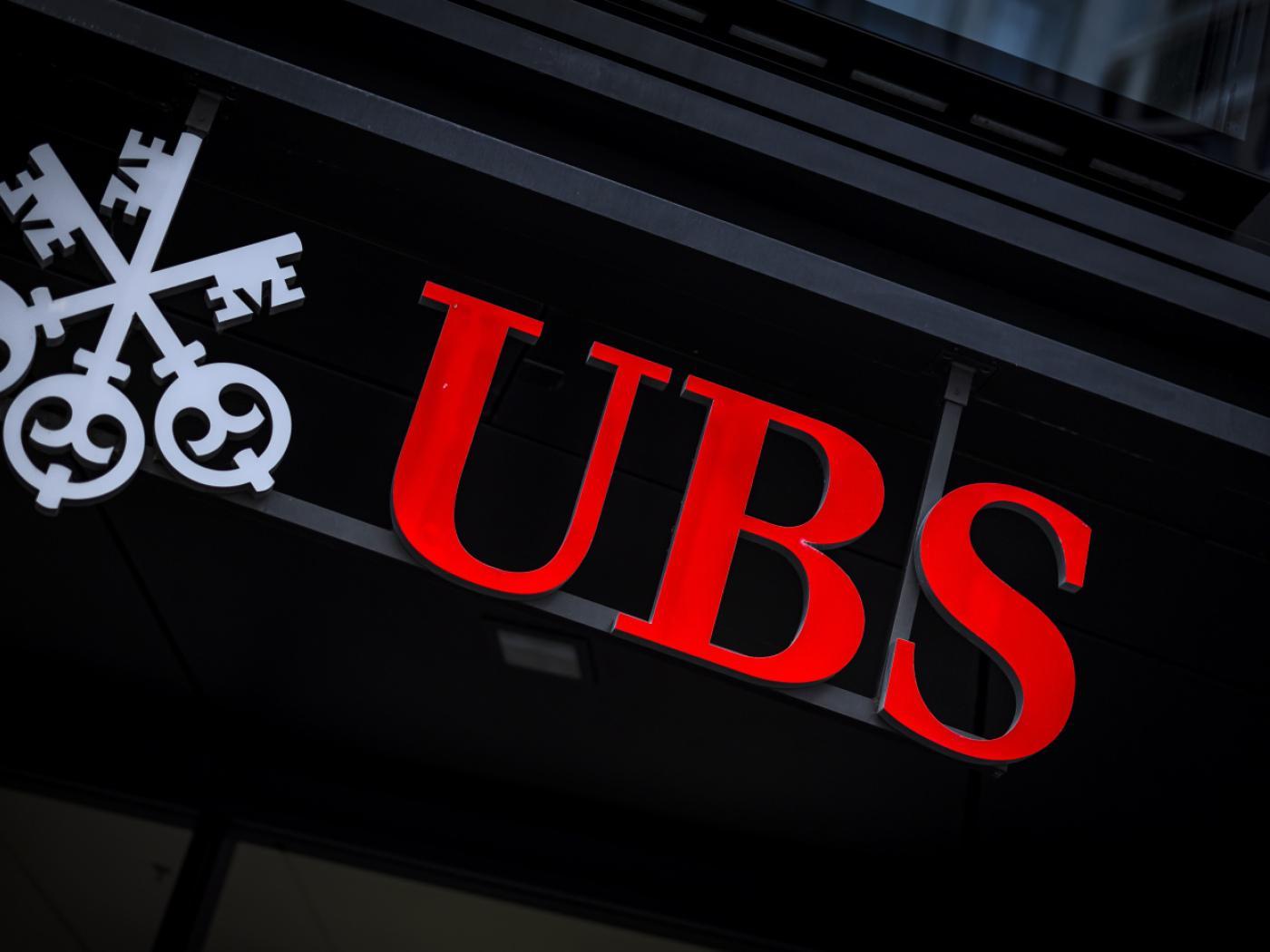 The new coronavirus that originated in China, apparently first detected in December, emerged on the world’s stage in January and continues to dominate the investment climate. There are two critical questions for investors and businesses whose answers will likely be clearer in the first part of March. First, will Covid-19 be contained for the most part by the end of Q1?
The new coronavirus that originated in China, apparently first detected in December, emerged on the world’s stage in January and continues to dominate the investment climate. There are two critical questions for investors and businesses whose answers will likely be clearer in the first part of March. First, will Covid-19 be contained for the most part by the end of Q1?
China altered its methodology a couple of times, and many observers questioned the quality of the data in the first place. The unprecedented breadth of travel restrictions in China may have slowed the transmission but failed to contain the virus. Nor has the next line of defense, (South Korea, Japan, Italy, and Iran) enjoyed better success. Indeed, as February drew to close, new cases were growing faster outside of China than inside.
While the World Health Organization is hesitant to call it a global pandemic, the increasing number of countries are reporting cases. All countries should be prepared. Some hope that like SARS, Covid-19 could be stalled by warmer weather, but it has yet to be seen. The potency of the virus was particularly strong in Hubei, the Chinese province of origin, and this seemed to have elevated the fatality rates. While the virus looks less deadly outside of China, the asymptomatic spreading of the virus, longer incubation period, and bottlenecks in testing warn of high contagion risk.
The second question is about the economic impact and policy response. The expected peace dividend from the US-China Phase 1 trade deal often seemed exaggerated in any event. Most of the tariffs remained in place, and amounts of purchases China committed, especially in the energy and agriculture sectors, appeared greater than could be delivered without disruption, and now will be even more elusive. Part of the economic impact is a function of initial conditions. The US economy was growing around 2%, while Europe’s ended 2019 on an especially poor note and Japan was suffering from a deep, mostly self-induced, contraction.
Even under the most optimistic scenarios where the Chinese economy recovers fully in Q2 from Q1, growth this year may be halved from last year. There is scope for fiscal and monetary support in ex-Japan Asia, though some countries, like India, have too strong of price pressures to allow for rate cuts. It seems the conservative governments in the UK and the US are more likely to offer fiscal support than the eurozone or Japan. After eschewing the Tory’s fiscal rules, Prime Minister Johnson is expected to offer spending increases and tax cuts in the March 11 budget. The Trump administration has been hinting at middle-class tax cuts, though they were not contained in the recent budget proposals. Still, there is talk of a second bite of the apple that would include some infrastructure spending as well.
Monetary policy returns to the fore after most major central banks did not meet last month. New economic assessments will be offered, as well. Investors are pricing in easier monetary policy around the world. Among the major central banks, the Federal Reserve is seen as having the most scope to cut rates. However, through the end of February, and in the face rising expectations for action, Fed officials show little inclination to ease policy.
This changed on February 28. Federal Reserve Chairman Powell issued a statement while the markets were still open that used word cues which in the past has signaled a rate cut and the question for many investors was whether it would be a 25 bp or 50 bp move. Indeed, the logic of the rate cut is similar to last year’s moves. With US inflation below target, insurance against the global headwinds is relatively cheap. The risks emanating from abroad are arguably greater than a year ago, and the dollar is stronger.
America’s biggest rival, China, has suffered a body blow. Europe and Japan’s growth and price pressures are lackluster at best, and the exit from negative interest rates does not appear likely anytime soon. The divergence helped propel the US dollar to its best level against the euro since April 2017 and the highest against the Australian dollar since the Great Financial Crisis. It proved to be a superior haven than the Japanese yen and rose above JPY112 for the first time since last April before selling off sharply in the last week of February as equities crashed and prospects of Fed easing soared.
The first two significant dollar rallies since the end of Bretton Woods, the Reagan-Volcker rally (the late-1970s until 1985), and the Clinton-Rubin rally (1995-2000) ended with intervention. Both times, the strength of the US dollar fueled American protectionism and other major countries were increasingly concerned about the weakness of their currencies. In October 2000, Europeans led the campaign for coordinated intervention to stop the new single currency from depreciating (born in 1999 at around $1.19, it fell to almost $0.8250 in 2000). Now it is only an occasional tweet by the US President that expresses concern about the dollar’s strength. With strong disinflationary forces, neither Europe nor Japan seems particularly bothered by their currencies’ weakness. Trump’s wishes/tweets have little noticeable impact on the $6.6 trillion a day foreign exchange market, for which the dollar is on one side of nearly 90% of the trades.
Dollar: A new divergence appeared to have opened in which its economy seemed better positioned to withstand the coming shocks than its main economic rivals, such as China, Europe, and Japan. Most of the important January data came in better than expected. However, between the Boeing output cuts, the warnings from the bellwethers Apple and Microsoft, airlines, and credit card companies, and potential supply disruptions still to be felt, investors alarmed. The 30-year bond yield fell to record lows and is nearly 35 bp below the Fed’s 2% inflation target. The 10-year yield is at record lows (~1.11%) and more than 10 bp below the three-month T-bill yield. The market is discounting a little more than 90 bp of rate cuts this year, though Federal Reserve officials have not wavered from their mantra that the economy and policy are in a “good place.” Nevertheless, officials will likely temper their views when new forecasts are provided at the March 18 FOMC meeting and deliver at least a 25 bp rate cut. A 50 bp rate cut looks more likely than standing pat after Federal Reserve Chairman Powell’s unscheduled terse statement.
Euro: Given the importance of exports from several northern EMU members, and especially Germany, slower world growth is a knock on the euro. Some German car companies, for example, derive a significant share of their profits from China. As February drew to a close, the German Finance Minister was pushing for the end of the “black zero” no-deficit stance, but rather than a public investment spree financed by borrowing at negative rates, Scholz is advocating federalizing some municipality debt. The head of the Bundesbank warned that its forecast for a lowly 0.6% growth this year was at risk. The coronavirus has struck Italy the hardest in Europe, and the Italian economy is notoriously weak, and the banks are hampered by bad loans. The emergency will allow Italy to draw greater fiscal support than otherwise would have been the case. Not only doesn’t the ECB have a credible strategy to escape negative interest rates any time soon, but the market is beginning to price in a chance of a move deeper into negative territory later this year. The euro is used by hedge funds and other levered accounts to fund the purchases of higher-yielding assets. The higher volatility spurred by the reassessment of the impact of the coronavirus forced such investors to liquidate the risk assets and buy back their funding currency, such as the euro. The ECB meets on March 12. While no policy adjustment is likely, there is expected to be a recognition of the increasing downside risks.
(end of January indicative prices, previous in parentheses)
Spot: $1.1025 ($1.1093)
Median Bloomberg One-month Forecast $1.1045 ($1.1147)
One-month forward $1.1047 ($1.1113) One-month implied vol 6.8% (4.1%)
Yen: Just as it appeared that the Japanese economy was recovering from the double-whammy of a sales tax increase and the typhoons in Q4 19, the coronavirus is delivering another negative shock. Supply disruptions have hit the auto sectors. Tourism has suffered, and exports are weak. The risk is that the Japanese economy contracts here in Q1 20, which would be the second consecutive quarterly decline in output, which is an often-cited rule-of-thumb definition of a recession. The BOJ may respond with a facility to ensure credit is maintained. The Abe government will initially use reserves in the existing budget to help those impacted by the school closure and other disruptions. The BOJ meets on March 19. The International Olympic Committee is likely to decide in April or May about whether to go forward the games, currently scheduled to begin in late July. If the games are canceled, look for a supplemental budget to cushion the blow.
Spot: JPY107.90 (JPY108.35)
Median Bloomberg One-month Forecast JPY107.90 (JPY108.68)
One-month forward JPY107.50 (JPY108.00) One-month implied vol 8.9% (5.8%)
Sterling: While the UK economy appears to be recovering from the weakness in Q4 19, it has not been sufficient to lift sterling very much. The problem is that the UK and EU have staked out antagonistic positions for the negotiations that will start in earnest in early March. The UK seeks a trade agreement like the one the EU struck with Canada after years of negotiation. The EU does not want to grant the same privileges because the proximity and size of the UK economy would arguably give it a significant advantage. Prime Minister Johnson has pledged not to seek an extension in the standstill agreement, which is in place until the end of the year. The early negotiations are unlikely to lead to any break-through. Both sides have shown a penchant for brinkmanship, and such tactics require going to the brink. In fact, Johnson appears to be shortening the runway by threatening to walk away from the talks at the end of June if the negotiations do not look promising. The UK’s budget will be delivered by the new Chancellor of the Exchequer on March 11. The Conservative government is expected to provide fiscal stimulus after having eschewed the previous strictures. This will give the new central bank governor Baily some flexibility. His first MPC meeting is on March 26. The past few meetings have seen two dissents in favor of an immediate cut. The market is leaning toward a Q3 rate cut.
Spot: $1.2825 ($1.3206)
Median Bloomberg One-month Forecast $1.2870 ($1.3203)
One-month forward $1.2835 ($1.3216) One-month implied vol 7.3% (6.0%)
Canadian Dollar: The Bank of Canada did not flinch last year when the Federal Reserve delivered three rate cuts. However, the risks to growth appear to be rising, and the terms of trade have deteriorated. The market has a greater sense of urgency than Bank of Canada officials who have softened the neutral stance. Recent data, like the IVEY survey, employment, and housing starts bounced back from a soft end to 2019 (0.3% annualized in Q4 19), and at 2.4%, the headline CPI is matching its highest level since the inflation scare in June-August 2018. The market has about 10 bp of a 25 bp move (40%) discounted for the March 4 meeting. This seems exaggerated. A Q2 timeframe seems more likely. Several models of fair value estimate that with a roughly 2.8% decline in February, the Canadian dollar is about 10% under-valued.
Spot: CAD1.3405 (CAD 1.3237)
Median Bloomberg One-month Forecast CAD1.3330 (CAD1.3167)
One-month forward CAD1.3410 (CAD1.3200) One-month implied vol 6.2% (4.1%)
Australian Dollar: Australia’s ties to China, which has helped it avoid a recession (two quarters of negative growth) since 1991. However, those ties are now costly. The disruption emanating from China is a significant headwind for Australia. The Australian dollar is one of the worst-performing major currencies this year, losing about 6.3% against the dollar as the China-shock compounds the economic blow from the wildfire. The Australian dollar is at its lowest level against the US dollar since the 2008-2009 Global Financial Crisis. Its weakness on a trade-weighted basis likely takes the pressure off the Reserve Bank to cut rates at the March 3 meeting. A move seems more likely in Q2 that would bring the cash target rate to 50 bp.
Spot: $0.6515 ($0.6692)
Median Bloomberg One-Month Forecast $0.6575 ($0.6798)
One-month forward $0.6520 ($0.6695) One-month implied vol 9.4% (7.1%)
Mexican Peso: We have attributed the peso’s strength last year and through January 2020 to international savings attracted to Mexico’s high real and nominal rates. Long pesos against the yen, or euro, or Swiss franc was a popular trade among speculators, hedge funds, and other levered accounts. Such “carry trades” are sometimes compared to “picking up pennies in front of a steam roller.” It works until it doesn’t. Such strategies are predicated on low volatility, which typically corresponds to robust appetites for risk. The coronavirus represents the exact opposite, and the peso has paid the price. It depreciated by a little more than 5% in February, easily offsetting the 0.45% gain in January. The carry-trade strategy will return when the markets stabilize, and that means the peso may be among the quickest to recover. The central bank meets again at the end of the month (March 26), and although the rate-cutting cycle may not be over, Banxico will likely stand pat as the peso’s precipitous decline could risk progress on inflation.
Spot: MXN6.9920 (MXN18.8450)
Median Bloomberg One-Month Forecast MXN6.9940 (MXN 18.9747)
One-month forward MXN19.74 (MXN18.9250) One-month implied vol 13.6% (7.6%)
Chinese Yuan: The coronavirus virus dealt a blow to the world’s second-largest economy and highlights the country’s weakness in terms of public health and information and exposure to the vulnerability of its debt-financed growth. Liquidity infusions and forbearance are being to deal with the economic impact. Local governments are funding new infrastructure projects that will provide fiscal stimulus. The government is pushing hard to get the factories and offices working at capacity again and by the end of February, estimates suggest the world’s second-largest economy was operating at 60%-70% of normal. Rate cuts and reductions in the reserve requirements have been hinted at by officials. With high US tariffs still in place for most of its imports from China and continued US government pressures, the coronavirus, neither the first nor likely the last originating in China, may further encourage business, and especially US businesses to re-think its supply chains and the need for redundancy. A weaker yuan is consistent with easier monetary policy and the slower growth (an outright contraction in Q1 looks hard to avoid, though Chinese statistics are what they are). Yet there is no reason to look for a substantial depreciation as it would put at risk other policy objectives.
Spot: CNY6.9920 (CNY6.9109)
Median Bloomberg One-month Forecast CNY6.9940 (CNY6.9562)
One-month forward CNY6.98 (CNY7.0050) One-month implied vol 3.8% (3.9%)
Full story here Are you the author? Previous post See more for Next post
Tags: #USD,macro,newsletter



























